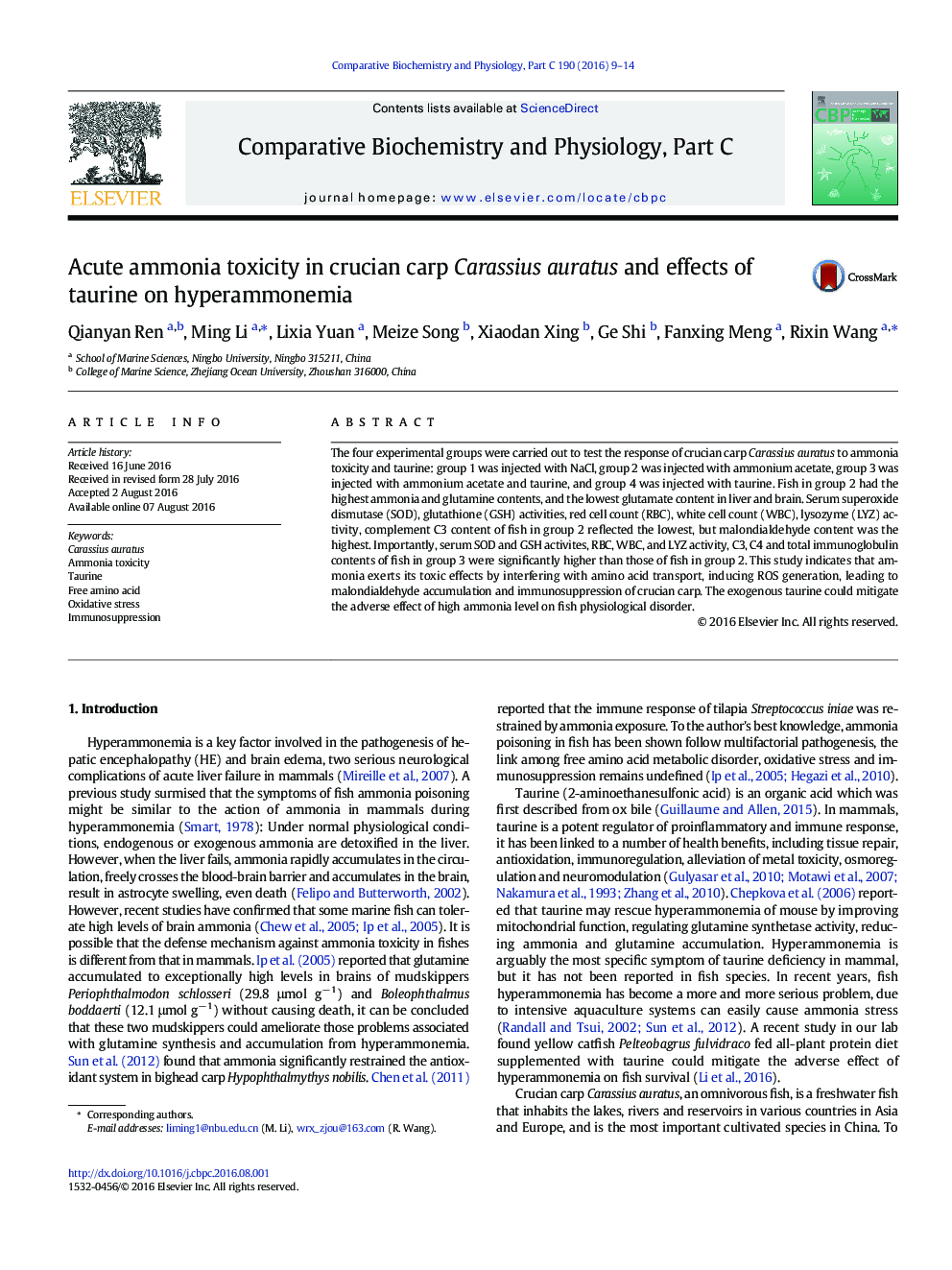| Article ID | Journal | Published Year | Pages | File Type |
|---|---|---|---|---|
| 1977083 | Comparative Biochemistry and Physiology Part C: Toxicology & Pharmacology | 2016 | 6 Pages |
The four experimental groups were carried out to test the response of crucian carp Carassius auratus to ammonia toxicity and taurine: group 1 was injected with NaCl, group 2 was injected with ammonium acetate, group 3 was injected with ammonium acetate and taurine, and group 4 was injected with taurine. Fish in group 2 had the highest ammonia and glutamine contents, and the lowest glutamate content in liver and brain. Serum superoxide dismutase (SOD), glutathione (GSH) activities, red cell count (RBC), white cell count (WBC), lysozyme (LYZ) activity, complement C3 content of fish in group 2 reflected the lowest, but malondialdehyde content was the highest. Importantly, serum SOD and GSH activites, RBC, WBC, and LYZ activity, C3, C4 and total immunoglobulin contents of fish in group 3 were significantly higher than those of fish in group 2. This study indicates that ammonia exerts its toxic effects by interfering with amino acid transport, inducing ROS generation, leading to malondialdehyde accumulation and immunosuppression of crucian carp. The exogenous taurine could mitigate the adverse effect of high ammonia level on fish physiological disorder.
